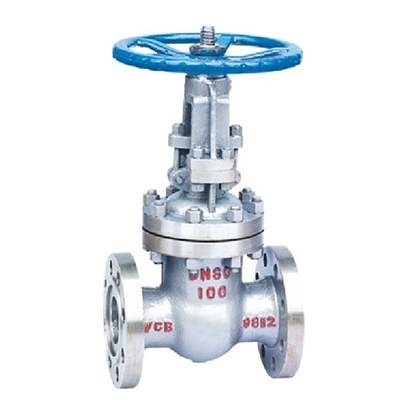Welcome to My Blog!
Before we dive into the content, I’d love for you to join me on my social media platforms where I share more insights, engage with the community, and post updates. Here’s how you can connect with me:
Facebook:https://www.facebook.com/profile.php?id=61563865935136
Now, let’s get started on our journey together. I hope you find the content here insightful, engaging, and valuable.
Introduction

In the realm of fluid control, the resilient gate valve stands as a critical component, offering reliable shutoff capabilities across various applications. Understanding the nuances of selecting the appropriate resilient gate valve is paramount to ensuring optimal performance and longevity of your systems. This guide aims to provide a comprehensive overview of the key considerations when choosing a resilient gate valve, empowering you to make informed decisions for your specific needs. By focusing on the essential aspects of these valves, we can help you avoid costly mistakes and ensure efficient operation.
Understanding Gate Valve Basics
A resilient gate valve, characterized by its rubber-encapsulated wedge, provides a tight seal, minimizing leakage. This design differs from traditional metal-seated gate valves, offering enhanced sealing performance. The resilient materials, typically elastomers, compress against the valve body, creating a leak-proof barrier. This makes the gate valve a popular choice in water and wastewater applications where tight shutoff and minimal leakage are crucial. The flexibility of the elastomer also allows for some tolerance in the seating surface, reducing the risk of leaks due to minor imperfections.
Key Factors in Resilient Gate Valve Selection
When selecting a resilient gate valve, several factors come into play. These factors ensure the valve meets the specific requirements of the application, guaranteeing optimal performance and preventing premature failure. A thorough understanding of these factors will lead to the selection of a valve that aligns perfectly with your system’s demands.
Material Compatibility for Gate Valve
The materials used in a gate valve must be compatible with the fluid being handled. This includes the body material, the wedge material, and the sealing materials. Common body materials include ductile iron and cast iron, while the wedge is typically encapsulated in EPDM or NBR rubber. Understanding the chemical properties of the fluid is crucial in preventing material degradation, which can lead to leaks and system downtime. Additionally, considering the environmental conditions, such as temperature and humidity, is vital for long-term material integrity.
Pressure and Temperature Ratings of Resilient Gate Valve
Pressure and temperature ratings are critical considerations. The resilient gate valve must be able to withstand the maximum operating pressure and temperature of the system. Exceeding these ratings can lead to valve failure, resulting in leaks or system damage and posing safety risks. It’s essential to select a valve with ratings that exceed the anticipated operating conditions to provide a safety margin and ensure reliable performance over time.
Size and Connection Types for Resilient Gate Valve
The size of the resilient gate valve must match the pipe size to ensure proper flow and prevent pressure drops. Connection types, such as flanged, threaded, or mechanical joints, must also be compatible with the system’s piping. Proper sizing and connection selection are crucial for maintaining system efficiency and preventing leaks at connection points. Choosing the correct connection type also simplifies installation and maintenance procedures.
Actuation and Operation of Resilient Gate Valve
Resilient gate valves can be manually operated, electrically actuated, or pneumatically actuated. The choice of actuation depends on the application’s requirements. Manual operation is suitable for infrequent operation, while actuated valves are preferred for automated systems where precise control and remote operation are necessary. Automated systems can enhance efficiency and safety by allowing for rapid and controlled valve operation.
Standards and Certifications for Resilient Gate Valve
Adherence to industry standards and certifications is essential. Ensure the gate valve complies with relevant standards, such as AWWA, ISO, or ANSI, to guarantee quality and safety. Compliance with these standards ensures that the valve has undergone rigorous testing and meets established performance criteria. These certifications also provide assurance of the valve’s reliability and longevity in various applications.
Resilient Gate Valve Applications
Resilient gate valves find applications in various industries, including:
- Water and wastewater treatment, where their tight sealing capabilities are essential for preventing leaks and ensuring efficient fluid handling.
- Fire protection systems, where reliable shutoff is critical for maintaining system integrity and preventing water damage.
- HVAC systems, where they control the flow of fluids in heating and cooling systems, ensuring efficient operation.
- Industrial process piping, where they handle a variety of fluids under different pressure and temperature conditions.
Resilient Gate Valve Maintenance and Longevity
Proper maintenance ensures the longevity and reliable performance of a gate valve. Regular inspection, cleaning, and lubrication are essential. Here is a table displaying some suggested maintenance check points. Consistent maintenance schedules can prevent unexpected failures and extend the valve’s lifespan, saving both time and money.
| Maintenance Task | Frequency | Purpose |
|---|---|---|
| Visual Inspection | Monthly | Check for leaks, damage, and corrosion |
| Operational Check | Quarterly | Ensure smooth opening and closing |
| Lubrication | Annually | Maintain smooth operation and prevent wear |
| Seal Inspection | Every 2 Years | Check for wear and replace if necessary |
| Pressure Testing | As needed | Verify pressure rating and seal integrity |
Addressing Common Resilient Gate Valve Issues
Common issues with resilient gate valves include leakage, difficulty in operation, and premature wear. Addressing these issues promptly prevents further damage and ensures system reliability. Early detection and resolution of these problems can minimize downtime and maintain system efficiency.
Leakage in Resilient Gate Valve
Leakage can occur due to damaged seals or debris lodged in the valve seat. Regular cleaning and seal replacement can prevent this. Ensuring proper installation and handling can also reduce the risk of seal damage.
Difficulty in Operation of Resilient Gate Valve
Difficulty in opening or closing a resilient gate valve can be caused by corrosion or lack of lubrication. Regular lubrication and inspection can prevent this issue. Selecting valves with corrosion-resistant materials can also mitigate this problem in harsh environments.
Premature Wear of Resilient Gate Valve
Premature wear can result from abrasive fluids or excessive cycling. Selecting appropriate materials and ensuring proper operation can mitigate this. Implementing regular maintenance schedules and using filters can also reduce wear and extend the valve’s lifespan.
Comparison with Other Valve Types

While resilient gate valves offer excellent shutoff capabilities, it’s essential to understand their limitations compared to other valve types, such as butterfly valves or ball valves. Each valve type has its unique characteristics, making them suitable for different applications. Understanding the strengths and weaknesses of each valve type allows for informed decision-making based on the specific requirements of the application. The choice of valve type can significantly impact the efficiency and reliability of the fluid control system.
Conclusion
Choosing the right resilient gate valve requires careful consideration of various factors, including material compatibility, pressure and temperature ratings, size, connection types, actuation, and standards. By understanding these factors, you can ensure optimal performance and longevity of your systems. For high quality resilient gate valve solutions, contact us today to discuss your project needs and find the perfect valve for your application. Don’t compromise on quality; invest in reliable valves that ensure the efficiency and safety of your fluid control systems.
FAQ
What is a resilient gate valve?
A resilient gate valve is a valve that uses a rubber-encapsulated wedge to provide a tight seal, minimizing leakage. This design makes them ideal for applications requiring a reliable and leak-free shutoff.
What are the common applications of resilient gate valves?
Common applications include water and wastewater treatment, fire protection systems, HVAC systems, and industrial process piping. These applications benefit from the valve’s ability to provide a tight seal and reliable operation.
How do I maintain a resilient gate valve?
Regular inspection, cleaning, and lubrication are essential for maintaining a resilient gate valve. Following a consistent maintenance schedule ensures the valve’s longevity and optimal performance.
What are the key factors to consider when choosing a resilient gate valve?
Key factors include material compatibility, pressure and temperature ratings, size, connection types, actuation, and standards. Evaluating these factors ensures that the selected valve meets the specific requirements of the application.
